
© 2023 British Car Club of Charleston. All Rights Reserved.

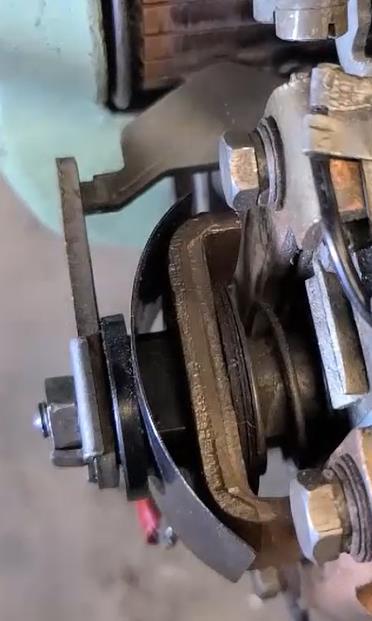
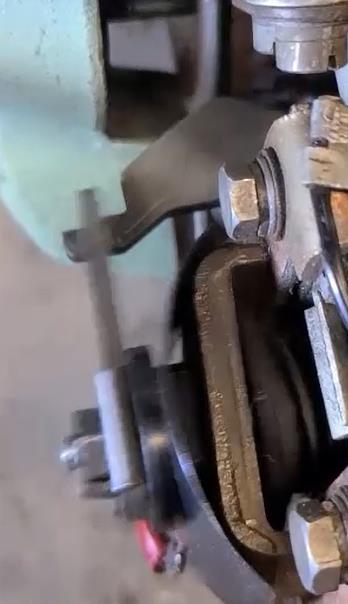
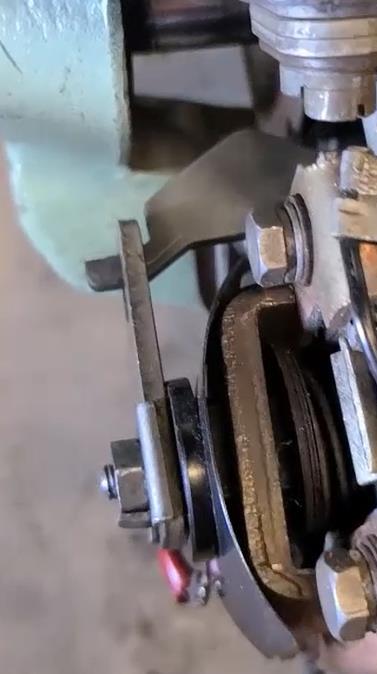
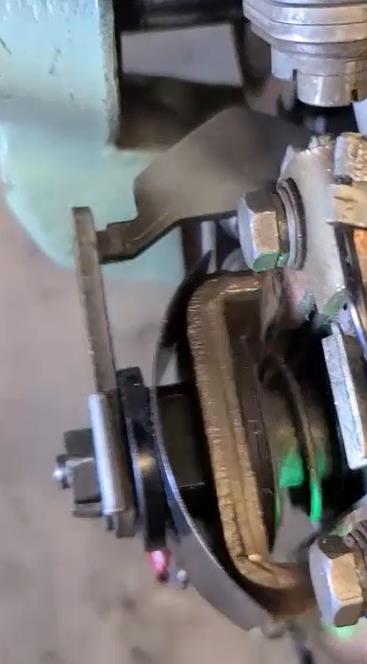
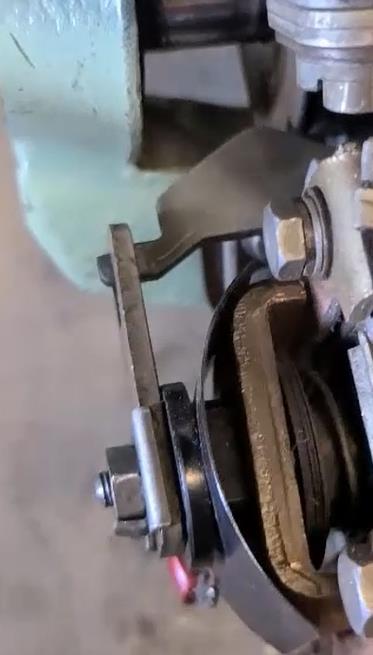
At start
Connection A in the picture below makes a connection. Solenoid engaged, looking good.
The rotor moved forward releasing the latch, looking good. This makes the electrical connection at B in the picture below. This gets the rotor spinning
What happened! The solenoid lost power, releasing the latch, stopping the rotor from spinning. With B making the electrical connection, the negative side of the solenoid goes to +24 Volts, turning it off.
Since the solenoid looses power, the connection at B opens therefore the solenoid is powered again. But doesn't get by the latch so the motor doesn't spin!
In our attempt to resolve the problem, a slow motion video of the back end of the Austin Champ starter was made. The video shows trying to run the starter twice. In real time, each operation takes less than a second. So it was impossible to see what was actually going on. See the snap shots below for an explanation. Turn your sound on, much more dramatic!
From this video, it was determined that the solenoid looses power because the negative wire was going to the incorrect terminal.
From this video, it was determined that the solenoid looses power because the negative wire was going to the incorrect terminal.
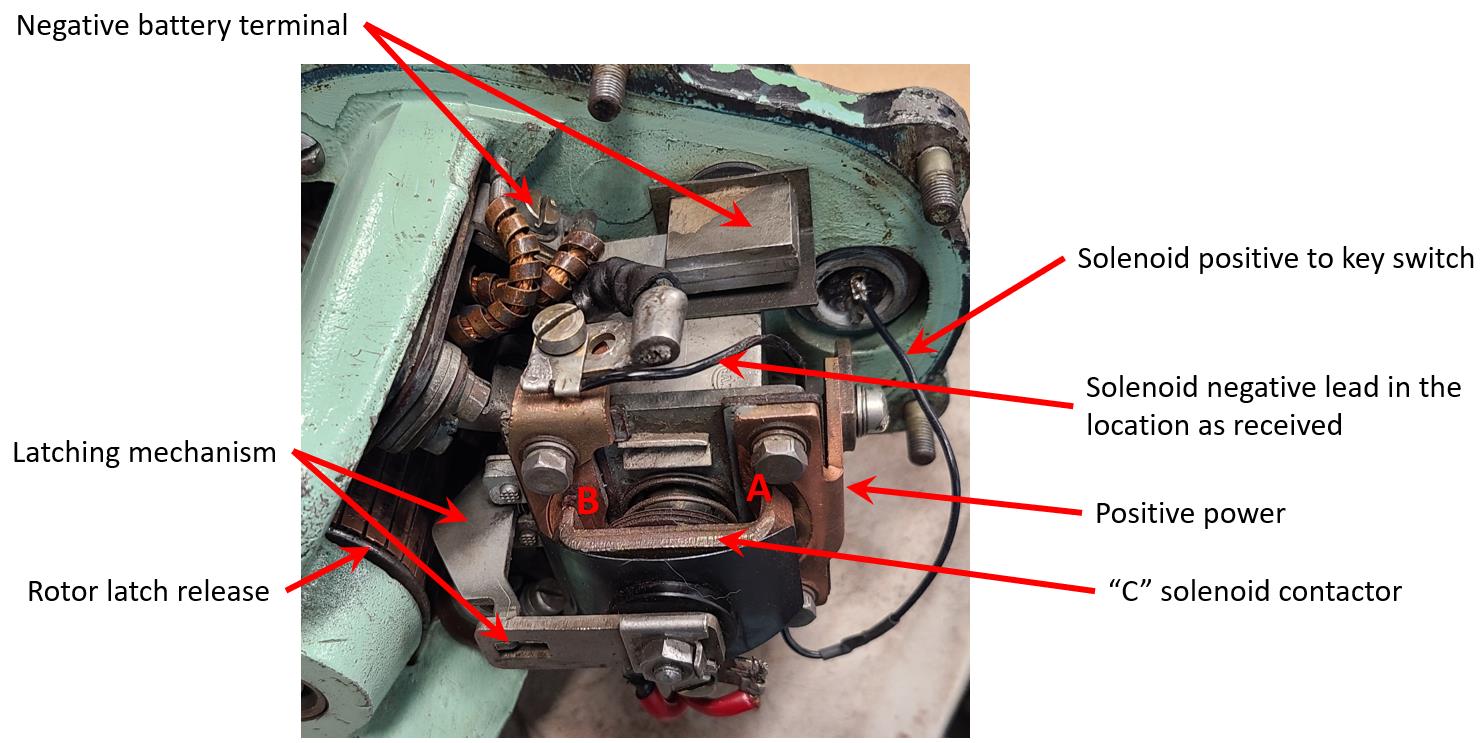
The negative of the solenoid should always be at -24 Volts. Therefore it should be connected directly to the negative battery terminal shown below.
The video below (with sound) was made of the working starter. Notice that the solenoid negative lead now goes to the correct location, the negative battery terminal shown above. The electrical connections at A and B as well as every electrical tab at every terminal was cleaned with sand paper. Before doing this, operation looked like a Christmas tree, electrical sparks all over. Notice now there are no sparks during the operation. In the slow motion above you can see sparks when electrical connections were made.
Bill Halls 1952 Austin Champ starter
Bill Hall, founder of Charleston Tea Plantation, now Charleston Tea Garden, passed away in February 2022. His Lotus and Austin Champ were passed to his daughter Jackie. The club was interested in getting the two cars at 2022 British Car Day. The rear wheels of the Champ were locked, the brakes didn't work and the starter didn't work. The club freed up the wheels and bled the brakes. The starter was a bigger challenge. The Champ has a 24 Volt system. Eveything about the Champ is heavy duty. It has a four cylinder Rolls-Royce engine and can be driven totally submerged.
We don't know much of the history of the starter other than it was brought to a local shop to be checked out before we looked at it. Since the starter did operate when Bill drove the vehicle, we assumed that the starter was assembled correctly. This turned out to be a poor assumption. There were several electrical connectors that had poor connections with the wires. Frank Wissman fixed those connections. We also noticed that a buss bar wasn't even connected to a terminal. We also noticed that one of the screw terminals was not tight. Even after fixing these issues, the starter still would not operate properly.
We don't know much of the history of the starter other than it was brought to a local shop to be checked out before we looked at it. Since the starter did operate when Bill drove the vehicle, we assumed that the starter was assembled correctly. This turned out to be a poor assumption. There were several electrical connectors that had poor connections with the wires. Frank Wissman fixed those connections. We also noticed that a buss bar wasn't even connected to a terminal. We also noticed that one of the screw terminals was not tight. Even after fixing these issues, the starter still would not operate properly.
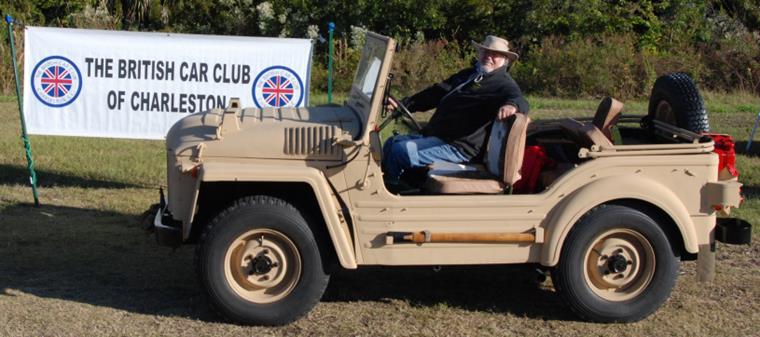
After putting the starter back in the Champ, we attempted to start it up. Unfortunately the starter worked great but it wouldn't start. After a little investigating, a hole in the flexible fuel line going to the fuel pump was found. We cut the line shorter to get rid of the hole and tried starting it again. With the choke out, it started right up.
The Champ was hard to roll, the rear wheels just didn't want to turn. With a little help from Frank Neill's truck, we were able get it to roll better. And after driving the Champ around the yard a bit, the engine smoothed out and ran great, started without the need of the choke. We still need to look at the brakes. Another time.
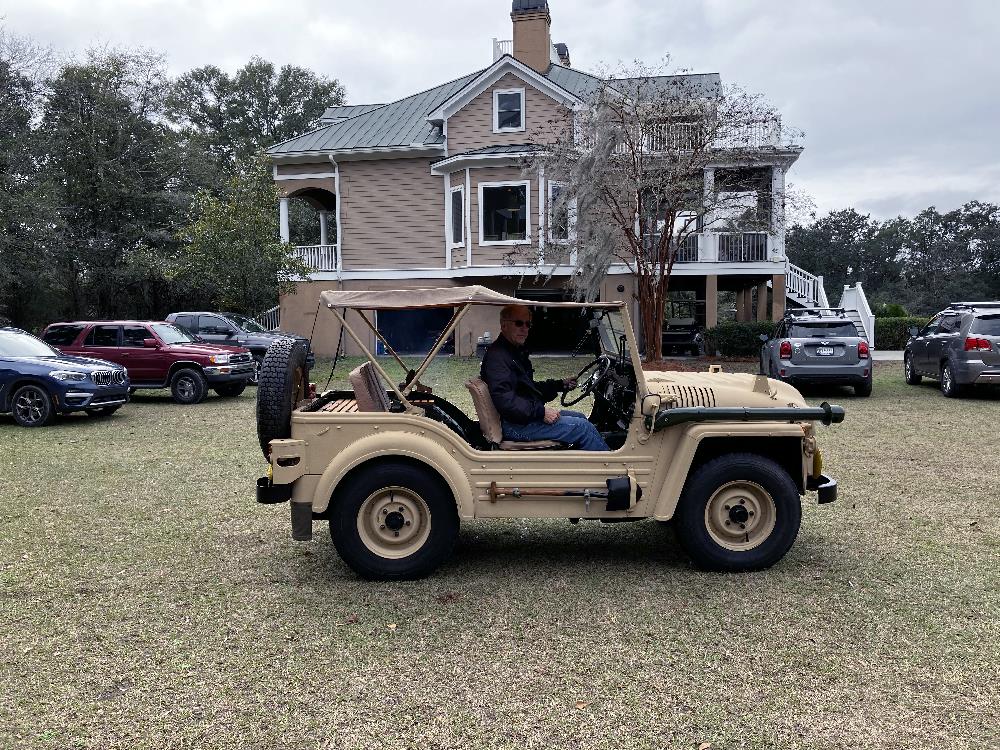
Dave checking out the brakes
Above is Jackie driving the Austin Champ. "It was the greatest Christmas gift ever"

















